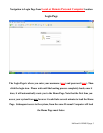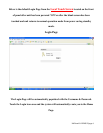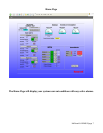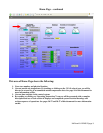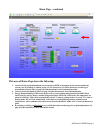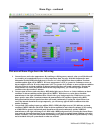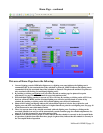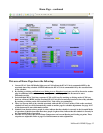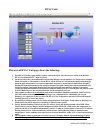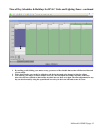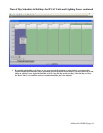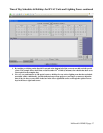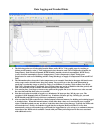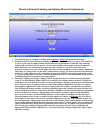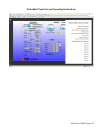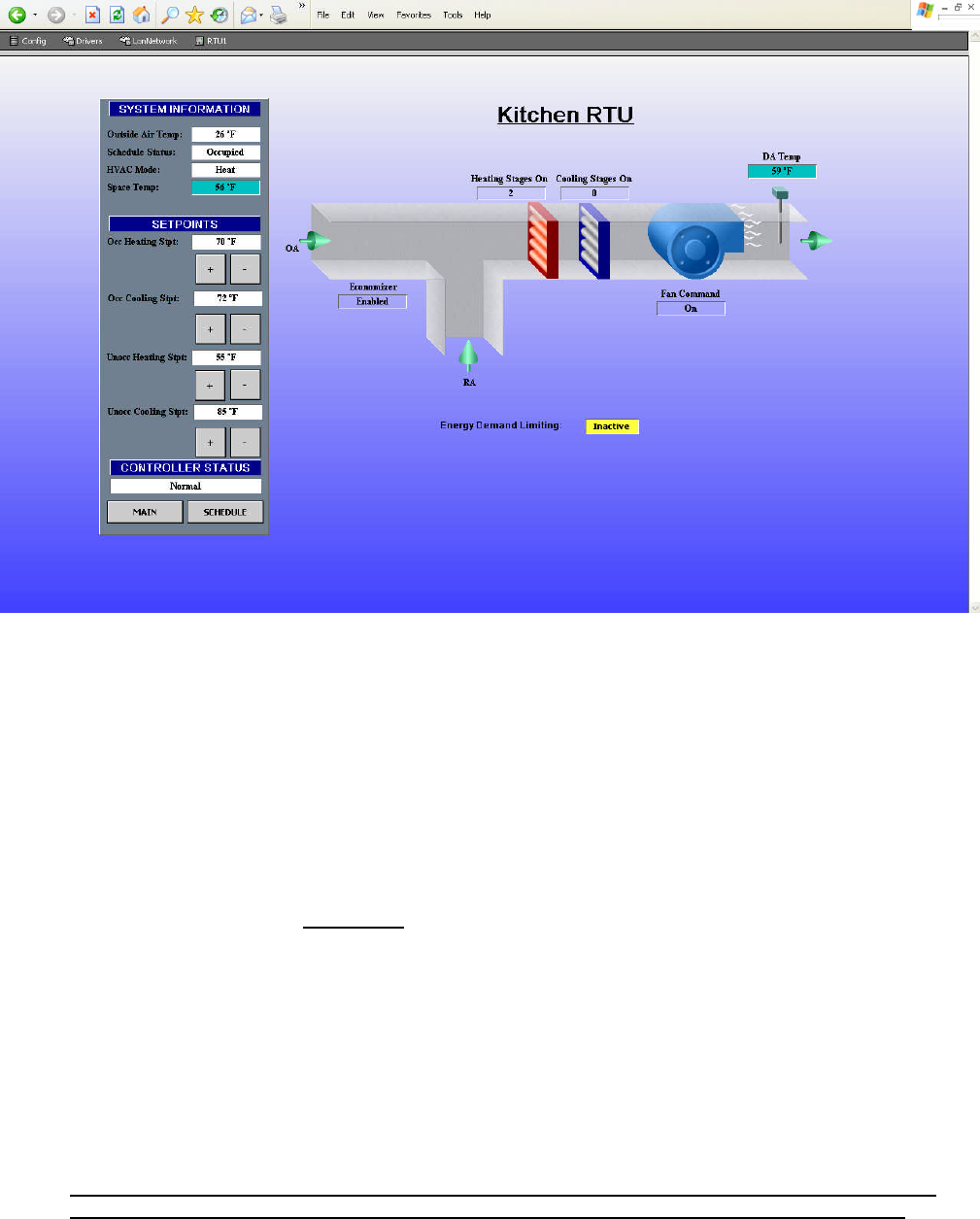
McDonald’s HEMS II page 13
HVAC Units
This area of HVAC Unit page shows the following:
1. Each HVAC Unit has a page similar to above associated with it. The current view is that of the Kitchen
HVAC Unit (Kitchen RTU – Roof Top Unit).
2. On the left side is the system information section that indicates current Outdoor Air Temperature, Schedule
Status (Occupied or Unoccupied), Current HVAC Mode of Heat or Cool (this mode changes automatically
based on space temperature verses space temperature set point), Current Space Temperature, Occupied
Heating Set Point and associated raise and lower buttons, Occupied Cooling Set Point and associated raise
and lower buttons, Unoccupied Heating Set Point and associated raise and lower buttons, Unoccupied
Cooling Set Point and associated raise and lower buttons, Status of HVAC Unit controller and icons to return
to Main (Home Page) or the associated Schedule for the selected HVAC Unit.
3. This graphic also shows the commanded status of the Economizer (Enabled or Disabled), Unit Fan (On or
Off) and number of Heating (1-4) or Cooling Stages (1-4) commanded ON. Additionally the current
Discharge Air (supply air to area served by the HVAC Unit) Temperature and state of Electrical Demand
Limiting (Inactive or Active) are shown.
4. By touching or clicking on the CYAN colored background area of the Space Temperature or Discharge Air
temperature you will be directed to a trend log of values for these points.
5. Energy Demand Limiting: When Active the box will say Active and the background will be RED. When
Inactive the box will say Inactive and the background will be YELLOW. When Active the temperature set
points for the HVAC Unit will be automatically raised 3°F (when in Cooling Mode) or lowered 3°F (when in
Heating Mode). HVAC Units automatically switch between Cooling/Heating Modes to maintain room
temperatures. Active condition exists when current electrical demand is within 2.5% of electrical demand set
point.
6. The Occupied Cooling set point must ALWAYS be set 2-3°F higher than the Occupied Heating set point,
otherwise a set point conflict will occur and the Controller Status indication will show ALARM state.



